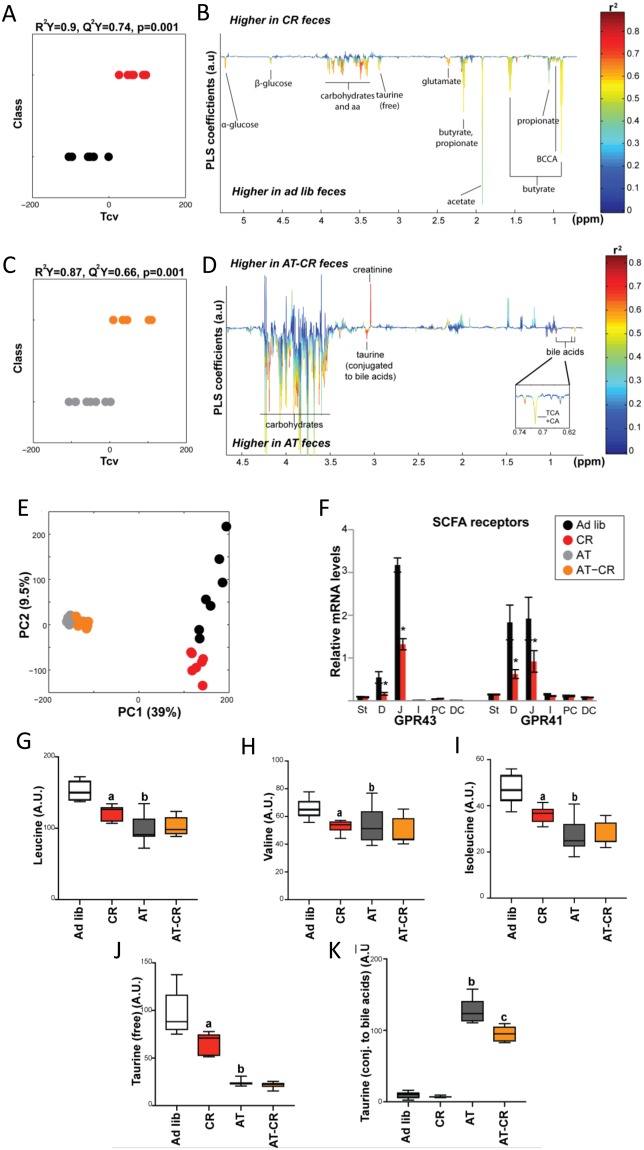Figure 6.
Caloric restriction (CR) results in significant changes in faecal bacteria composition and metabolite content. Projection on latent structure-discriminant analysis (PLS-DA) cross-validated scores (A,C) and loadings (B,D) for the discrimination between 1H-NMR spectra from duodenum extracts from CR vs. ad libitum (Ad lib) mice (A,C) and AT vs AT-CR mice (B,D). Q2Y represents the goodness of fit for the PLS-DA models and p-values were derived using 1000 permutations of the Y matrix. Metabolites are color-coded according to their correlation coefficient. Metabolites pointing upward and with R2 > 0.49 were significantly increased and those pointing downwards were decreased in the faeces from CR mice. Principal component analysis was performed on faecal 1H-NMR metabolic profiles (E). mRNA relative expression for short chain fatty acid (SCFA) receptors along the intestine (F). St-stomach, D-duodenum, J-jejunum, I-ileum, PC proximal colon, DC distal colon. The area under the curve of the 1H-NMR spectra was integrated for leucine (G), valine (H), isoleucine (I), free taurine (J), and conjugated taurine (K). Data are presented as a 10–90 percentile boxplot with mean. Groups were compared using one-way ANOVA and Sidak’s multiple comparison post-tests. a: p < 0.05 CR compared with Ad lib, b: p < 0.05 AT compared with Ad lib, c: p < 0.05 AT-CR compared with AT.

